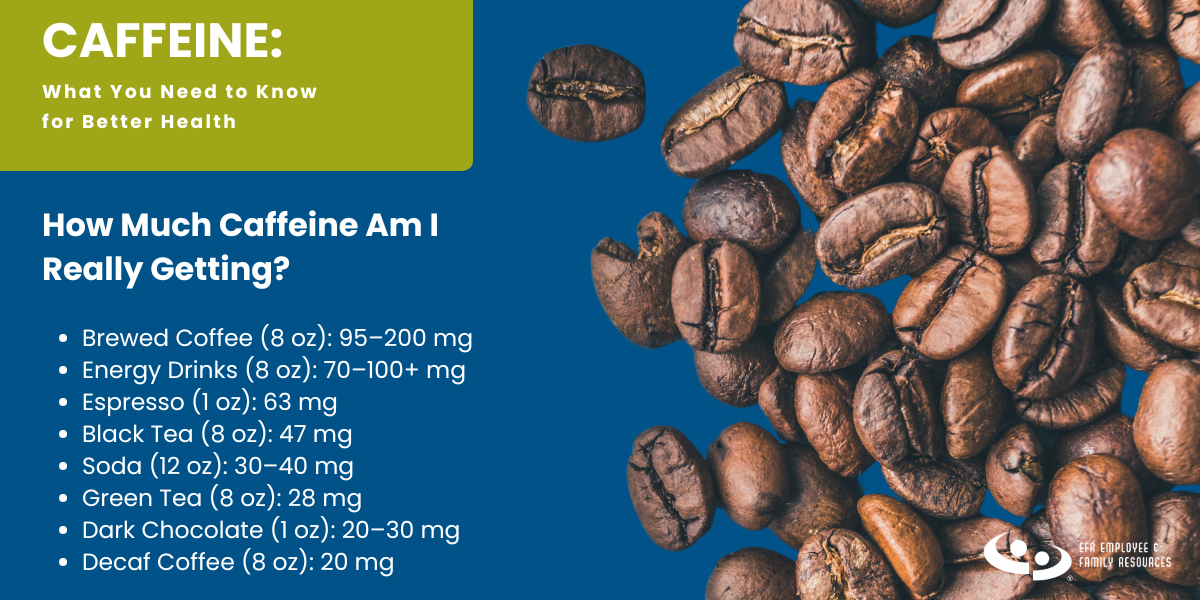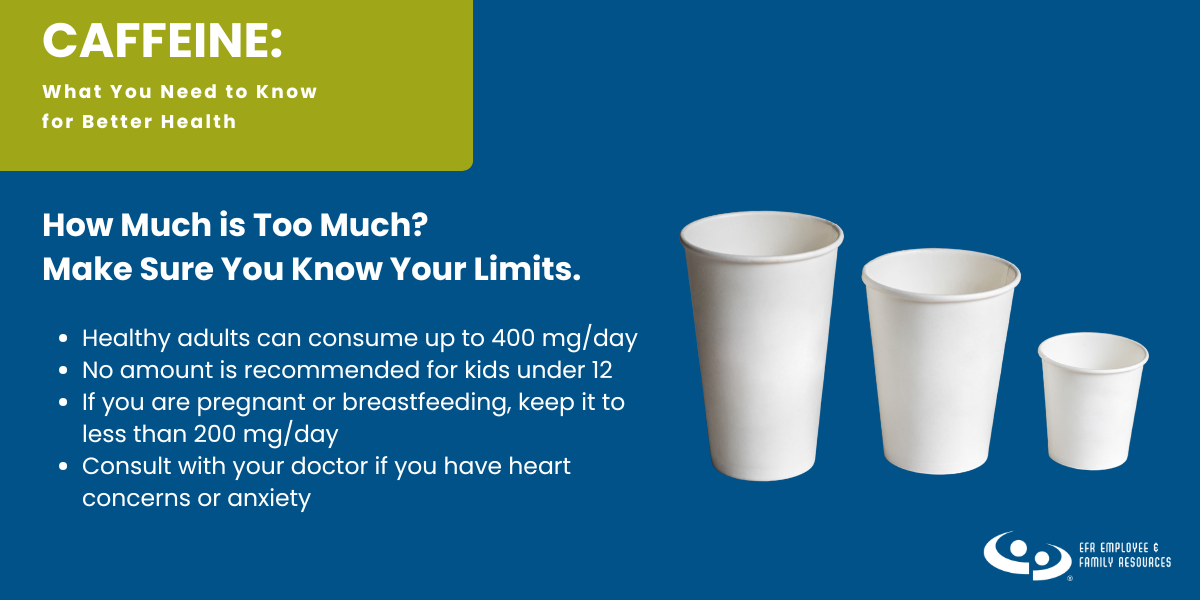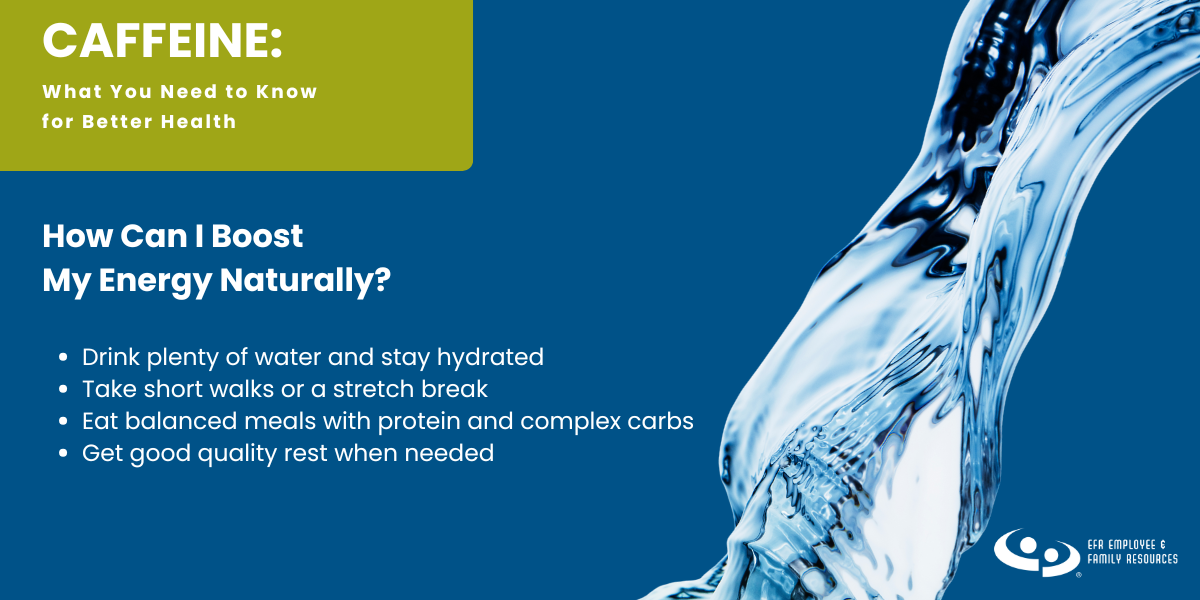From coffee to soda to energy drinks, caffeine is a part of daily life for many of us. And while it is naturally occurring, overconsumption can cause health problems such as increased blood pressure, heart palpitations, anxiety, headaches, and insomnia. For this blog, we sat down with Susie Roberts, a Registered Dietitian to discuss all things caffeine—why it’s such a big part of our lives, how much of it is in the food items many people enjoy regularly, and how much is too much. We’ll also talk about current trends and tips on how to boost your energy naturally so you can stop relying on caffeine to keep you energized throughout the day.
Q: Just this morning, I heard someone say “I’m not caffeinated enough for this day!” It really is such a big part of our daily lives. Why do you think that is?
A: It’s not surprising at all to hear that! About 90% of American adults consume caffeine daily. People are looking for ways to boost their energy and increase alertness and caffeine is readily available and socially acceptable.
Q: So, what exactly is caffeine, and how does it work?
A: Caffeine is a natural stimulant that affects the central nervous system. After consumption, it’s absorbed into the bloodstream and travels to the brain, where it blocks the effects of adenosine—a chemical that promotes sleep. This interference helps you feel more alert and awake.
Caffeine typically reaches your brain within 15 minutes, peaks in the bloodstream at 30 to 120 minutes, and has a half-life of 3 to 7 hours.
Q: Everyone knows that coffee and many soft drinks contain caffeine. But where else can it be found? If we are consuming these beverages and other items, how can we know the amount of caffeine we are getting?
A: Energy drinks have become very popular—especially among young adults. These contain not only caffeine, but may also have added sugars, so it’s a double whammy. Chocolate and many varieties of tea also contain caffeine. You may also want to check out any nutrition supplements or medications you are taking. And, many people may not realize it, but even decaf coffee contains a certain amount of caffeine.







